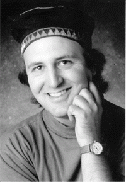conceptual artists' books?
Would a conceptual artist's book be an "altered book"? Or a "found book"? Or perhaps a book taken from one's shelf, with only the title page altered or replaced in favor of one that credits the artist who is committing the act of appropriation? What about taking an existing book, cutting out all of the pages, printing something else on the pages over the existing print & possibly images, then re-binding it in either a similar or divergent manner from the original? What about taking an existing book, pasting or sewing it along formerly openable sides so that the book is unopenable, placing it in another container that credits the artist/appropriator? Is something like Kenneth Goldsmith's Day, in which the author has retyped an entire day's issue of the New York Times and re-framed it as a book, as much a conceptual artist's book as a piece of conceptual writing? What other possibilities might there be? Are there particular interventions into existing works that are most useful in thinking of artist's books? I welcome your comments, and depending on what comes of them, I might try to create an exhibition of conceptual artist's books. I have no illusions that works such as I have proposed, or that others might propose, are anything new, i.e. such works have been made in the field of artis's books for years, even decades. Is it anything new to think of such work as "conceptual"?


4 Comments:
Charles,
Miranda Maher, a conceptual artist from nyc, has been working on projects with books for years. See some of her installations at the website below. I think these make the KG's little project seem mundane and boring, but maybe that's what he wanted.
http://www.mirandamaher.com/wst_page4.html
Barb
Nearly all of the first generation (and after) of conceptual artists made artist's books; the recent retrospective of Lawrence Weiner's work was nearly half artist's books and ephemera. Some of it was simply show catalogs, but much of it was specifically book art.
Marcel Broodthaers had been a poet before he became a conceptual artist; his final book of poems (and first work of visual art) involved rendering 50 unsold copies of one of his books literally unreadable by coating them in plaster and making a sculpture out of them.
Joseph,
I love that example. One of Karl Young's unique artist's books (he made several, bound in boards, very thick books) was a gathering of pages of pornography, but then book was then sealed on three sides very tightly, so one could barely slip a pinky into the pages along the foredge, effectly locking in the content. I have another of his books (I don't have the one I just described), titled Mining Rainbows, that is simply the clean-up pages from a small offset press, bound together to make an entirely colorful book that opens out in a kind of rainbow-fan. Not what I'd call beautiful, but marvelously effective.
Wonderful questions Charles! I'd like to see that exhibit. Reading your post, Dieter Roth came to mind immediately as one of the earliest artists consciously working with books conceptually, then fast forward to Information as Material as an example of the youngest and most vibrant presses I know. I wouldn't know where to begin--Sterne? Flaubert? Jabes? Iliazd? Much of what is now considered part of the 'democratic multiple' tradition would qualify, while Emily McVarish's handprinted Flicker is a rare moment where craft and concept make magic happen.
Post a Comment
<< Home